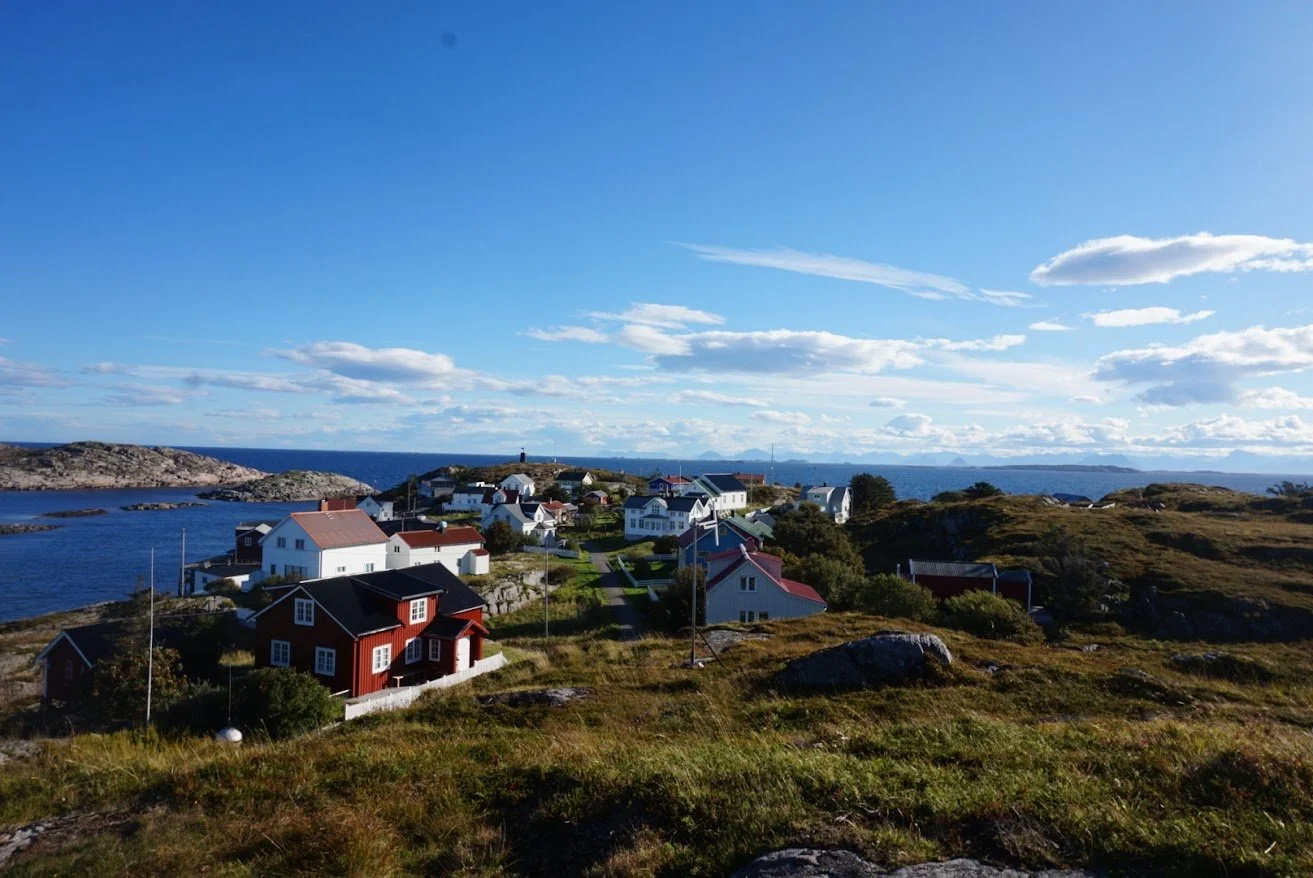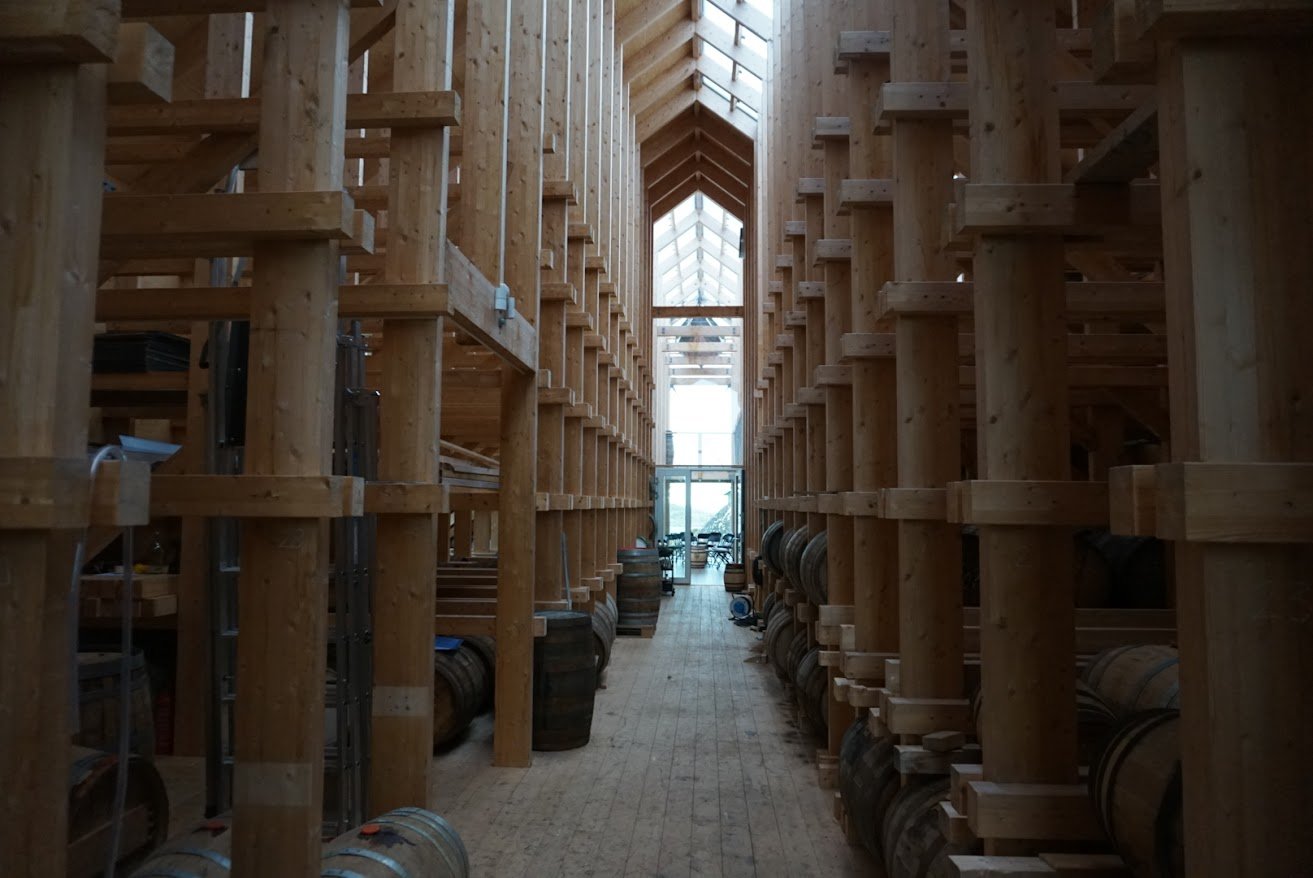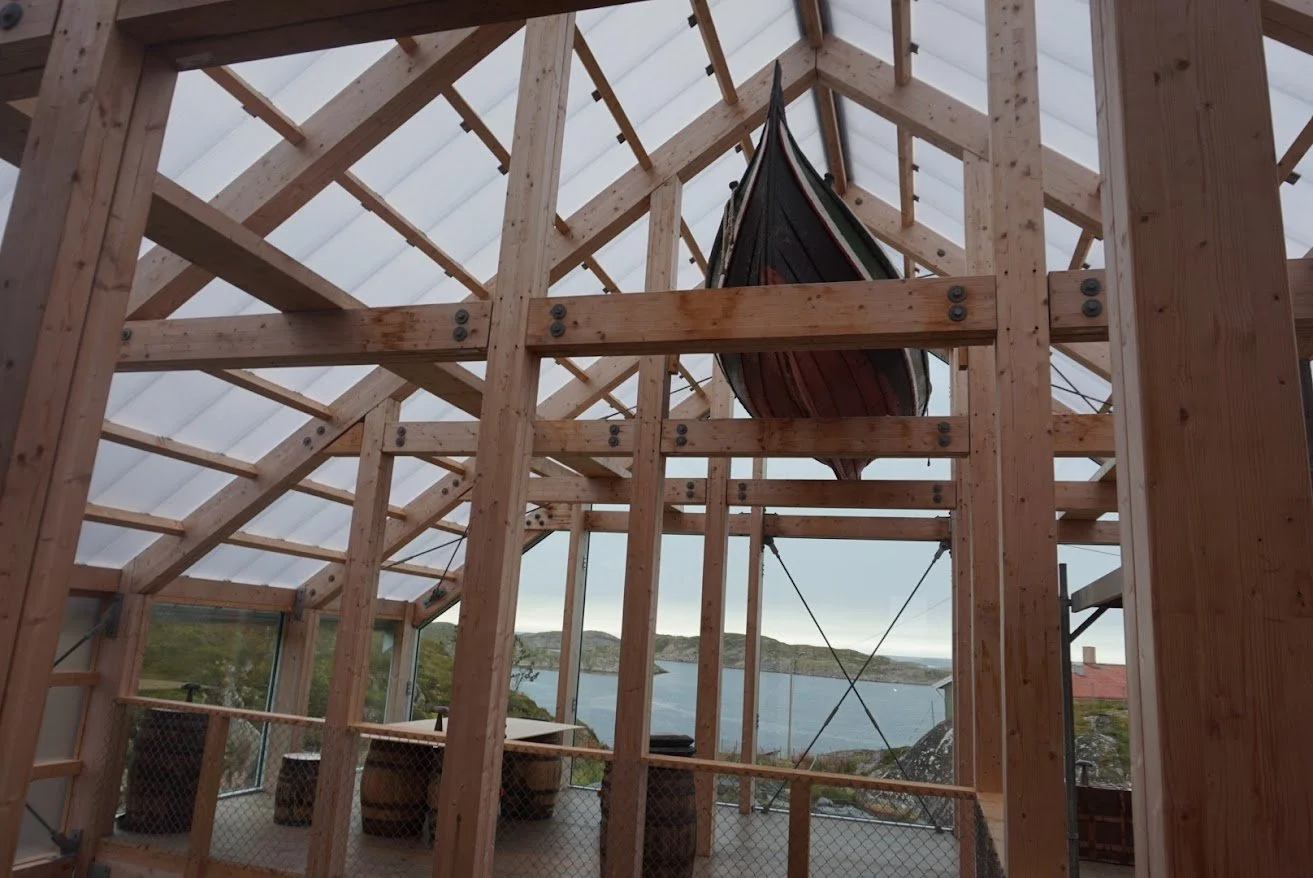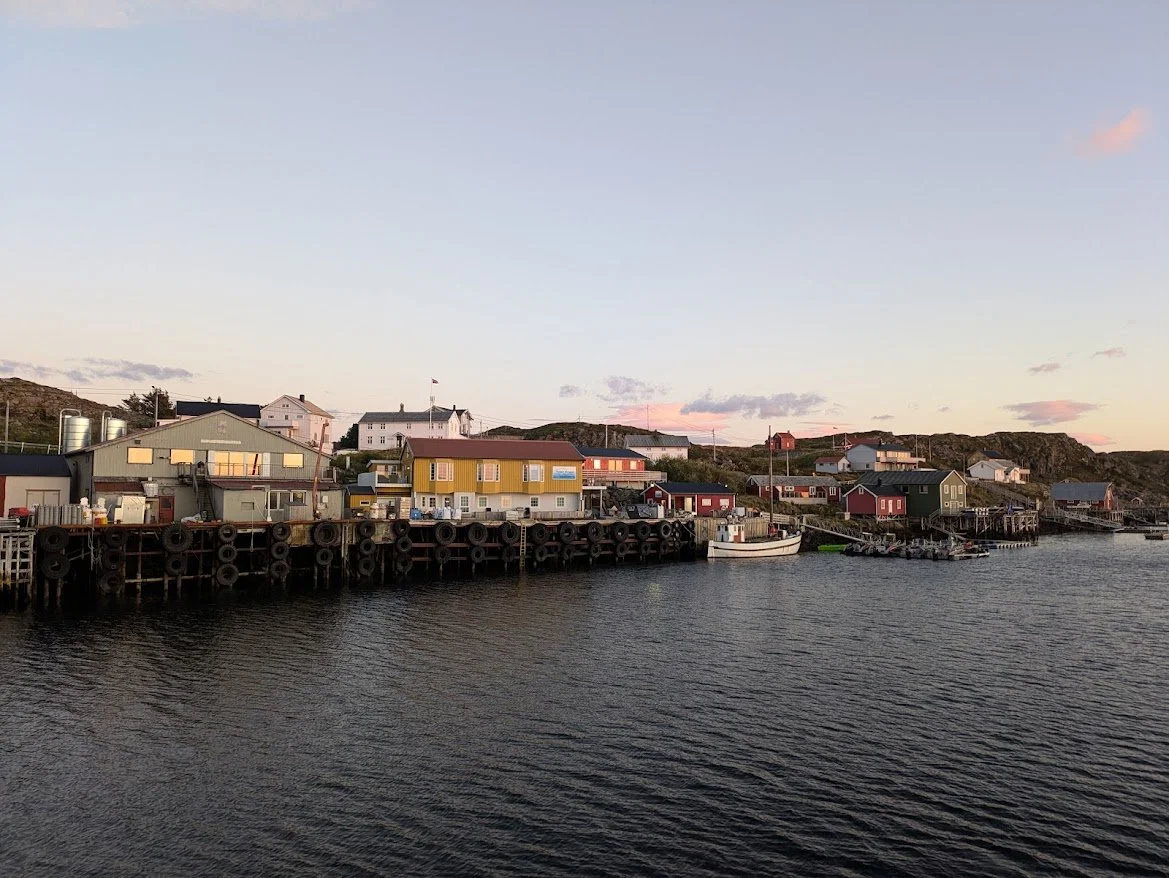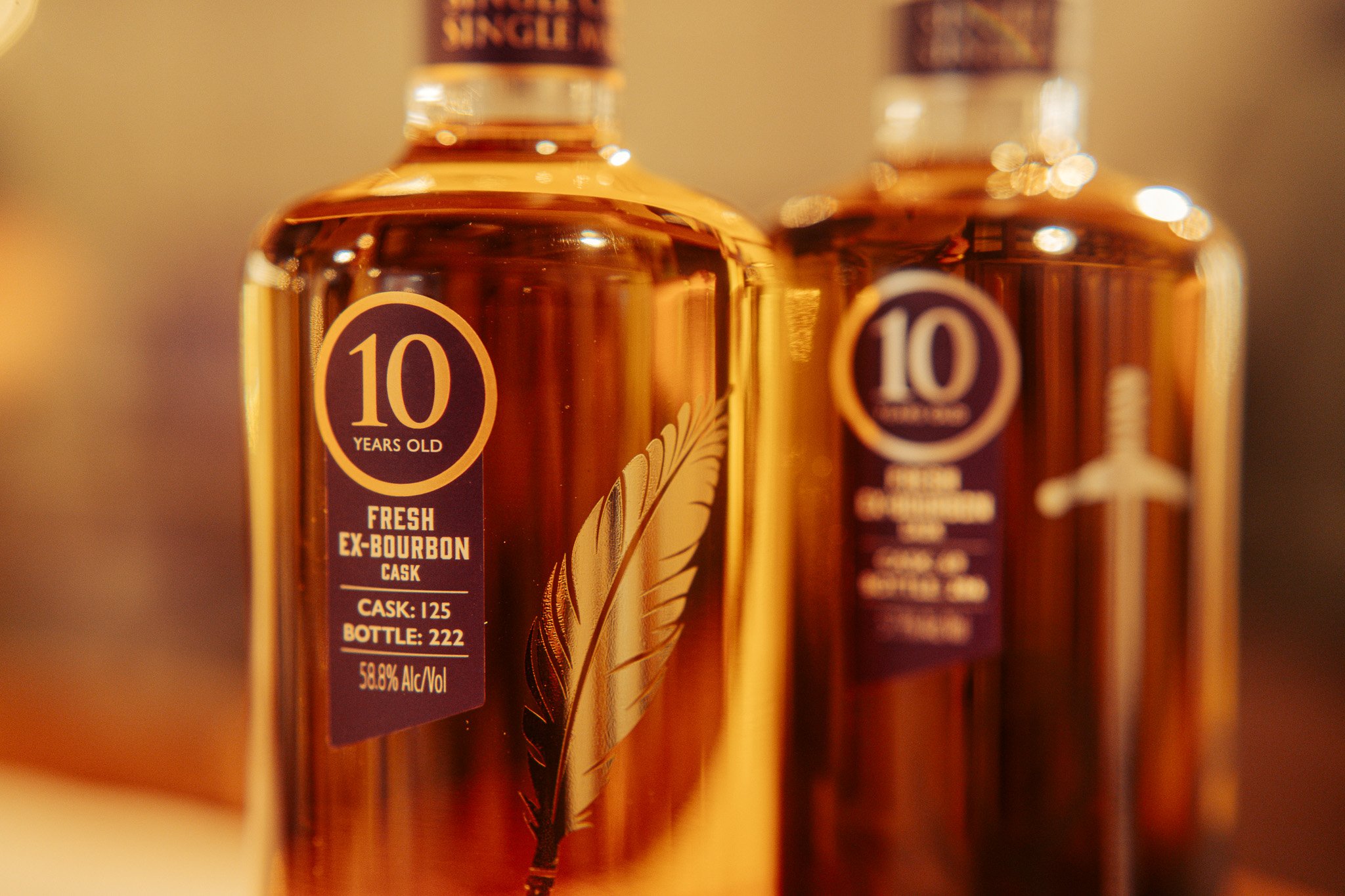Spirited away: A pilgrimage to Norway’s Whisky Cathedral
Praise be: the lighthouse at Myken, across the island from the Whisky Cathedral...
Beyond the Arctic Circle lies the most remote distillery in the world. Heather Storgaard makes the epic journey to pay homage
Nidaros Cathedral in Trondheim is an ancient centre of pilgrimages. It was long the final station of Christianity in the north, yet it sat at the start of my trip. My final goal was Myken, a tiny Arctic island that most Norwegians have never heard of. It is home to a distillery with a “Whisky Cathedral” as a warehouse. I haven’t been able to get it out of my head since I first glimpsed images of it last year.
Scots and Norwegians have been navigating the dangerous waters between their kingdoms for centuries. There were Vikings who left their chess pieces from Trondheim on Lewis. Further back, Gaelic-speaking monks would throw themselves on the mercy of God in boats from Scotland and Ireland. They greeted the Vikings when they arrived in Iceland. In more modern times, we were mostly chasing riches – fish, wood, oil. In the crypt at Nidaros, I found a gravestone belonging to a Captain William Miller, Shipmaster in Dundee. I was moved to meet a Scot here, even one who died over 250 years ago.
‘Eventually, I arrived at a pastel island bathed in creamy yellow, the lightly glowing sunset at 8.30pm timed perfectly with the boat’s final mooring’
My journey to Myken takes time. I started in Edinburgh, then pushed on from Oslo. I took a quiet Sunday in Trondheim to see Nidaros and was up early the next day to continue northwards. The weather was breathtaking, the train trundling through majestic forests. I had expected rain but there were bright skies and peaceful, cotton-like clouds. At Mo i Rana I lay on a sun lounger and looked out at Ramfjorden and Anthony Gormley’s Havmann statue – a bigger brother to those you can find on the Water of Leith in Edinburgh. Then it’s two buses and finally the boat from Tonnes out to Myken. We buzzed between quaysides until I wasn’t sure if I was looking at uninhabited rocks, island or mainland. The water was a dark, still blue. Eventually, I arrived at a pastel island bathed in creamy yellow, the lightly glowing sunset at 8.30pm timed perfectly with the boat’s final mooring.
Myken lies 32 km from shore in the Arctic Circle and has about 12 permanent residents
Myken is small and all-encompassing. I was met by Kjell Ove, who works at the distillery, and the community shop was opened for me. I was keen to explore the island, but tired, and apprehensive about understanding the local dialect (written down, my Danish and their Norwegian are nearly the same, but spoken is another matter). Yet I was determined to try, and managed fine in the end. I adored chatting with the locals over coffee in their own language, hearing their natural ways of talking about their island.
‘I stayed up late with the distillers, drinking whisky on the balcony while a pair of sea erne (both the Scots and Norwegian word for eagle) flew around the nearby rocks’
Myken Distillery was founded in 2013 by five couples with connections to the island. 32 km from shore, in the Arctic Circle — it was a truly wild idea. Their mission was to find a new business to help sustain the island’s tiny population of around 12 all year-round, and whisky was chosen. They bought and converted the island’s old fish factory, and started production in 2014. Ten years on, the Whisky Cathedral — a separate building that acts as a warehouse for maturing the spirit — won Northern Norway’s Architecture Prize, and distillery is doubling capacity soon, from their current 40,000 litres a year.
Casks outside the distillery on the quayside at Myken
I visited the pleasingly quirky distillery on my first morning, wandering around the small but plump direct-fired stills and then headed straight to the quayside. It was sunny, and I spent most of the day outside, wandering and browsing books about Scandinavian islands and northern Norwegian folklore. That evening, I was invited to eat a simple but beautiful dinner of fish, white sauce, potatoes and vegetables. The fisherman asked me later how I enjoyed his catch. Very much, I replied. The chef was Kerstin, a Myken-dweller who is half of a duo writing a book about the island, taking in food, local tales and beautiful photography. I stayed up late with the distillers, drinking whisky on the balcony while a pair of sea erne (both the Scots and Norwegian word for eagle) flew around the nearby rocks.
Myken whisky is warming and perfect for bracing island nights. The releases I tried were sherry-driven, bringing warm raisins and brown sugar notes from Spain to the north. At the Cathedral, I also sampled a nearly-three-year-old new make straight from the cask. This liquid is on the cusp of becoming whisky, which here, like in Scotland, has to be aged for at least three years in barrels. It is from precious casks made from a rare Norwegian oak that imparts a spicy quality to the spirit. I can’t wait for it to mature further and surprise fans of the burgeoning Scandinavian whisky scene.
Whiskykatedralen — the Whisky Cathedral
I finally reached the Whisky Cathedral on my second day. It moved me perhaps even more than Nidaros. I love those cathedrals built by recently-converted Vikings — Aarhus, Ribe, Lund and our own St Magnus in Kirkwall. But this cathedral is new, a modern homage to the spirit of the island. It inspired awe with its architecture in such an unexpected place, fitting perfectly but somehow surprising, too.
‘The smell of salt water and whisky vapours was sweeter to me than incense’
Originally, this building was simply a well-designed warehouse for whisky maturation. But once it was erected, the sweeping lines and nave flanked by sleeping casks clearly signalled a cathedral. Why not? We have a lot of religious terms in whisky. Everyone knows of the “Angel's Share” – thirsty cherubs pinching whisky evaporated from the barrel — and the “Devil’s Cut” – demons holding whisky back in the barrel. Watching Roar, the distillery manager, as he talked about the history of the island and distillery, handing out whisky to visitors who have come from afar, I felt there was something innately spiritual about this wild, improbable place. The smell of salt water and whisky vapours was sweeter to me than incense.
Barrels full of maturing spirit in the nave of Myken's whisky cathedral
Myken is enveloped by the sea, and life is dictated by it. Although the economy is no longer dependent on fishing, the goods boat can only sail in fair weather. Tourists must prepare to get stuck here. In Scandinavia, most churches on islands and the coast have Kirkeskib, church ships, suspended in the roof. The origin of the tradition is lost to time, but it makes sense as a plea to protect local vessels from the vagaries of the extreme weather. Myken’s Whisky Cathedral looks out to the sea, as everything here does. Fittingly, then, it has not a model but a real, local Nordland’s Boat in the roof. A century ago, Myken sustained over 100 people through fishing. Cod was worshipped alongside Christianity in Norway for centuries. But in 1981, seven men from Myken died when the island’s largest boat sank. The shadow of that remains, and the 1980s saw a shift away from commercial fishing, towards decline. Now, this whisky distilled from purified sea water is bringing people back again.
A Nordland’s Boat is hung in the ceiling of the Whisky Cathedral, a local twist on tradition
When I first contacted Roar about coming to Myken, he suggested it was best to stay at least a week. I was sceptical – the island is less than 500 metres squared. After five days, I desperately hoped the morning boat scheduled to take me away would fail to appear. Maybe the weather would keep me here? Myken gets to people like this. Roar and his wife Trude made an unplanned stop on a sailing trip sixteen years ago and are now cornerstones of the community. Chris, a recent Chemistry graduate from Trondheim, is on his fifth consecutive summer job at the distillery. This is a dangerous pilgrimage in the name of whisky, in more ways than one. I couldn’t recommend it more.
Dusk on the approach by express boat to the small quayside at Myken
How to travel to Myken (and buy their whisky)
The journey to Myken requires time. The easiest way to arrive is by flying to Bodø Airport, then taking a boat via Rodøy. This can be done in one day if your flight departs early enough. Alternatively, travelling from Trondheim needs a train to Mo i Rana, two connecting buses to Tonnes and a boat from there to Myken. This is all smoother than it may sound, with connections guaranteed. Boats sail year round, depending on weather, and can be booked at very reasonable prices through the local transport website, available in Norwegian, English and German. An overview of accommodation can be found here.
Generally, Myken whisky is only available on the Norwegian market through their state-operated Vinmonopolet shops. In the UK, there are still a few bottles of Berry Bros & Rudd’s Myken Single Cask available.



